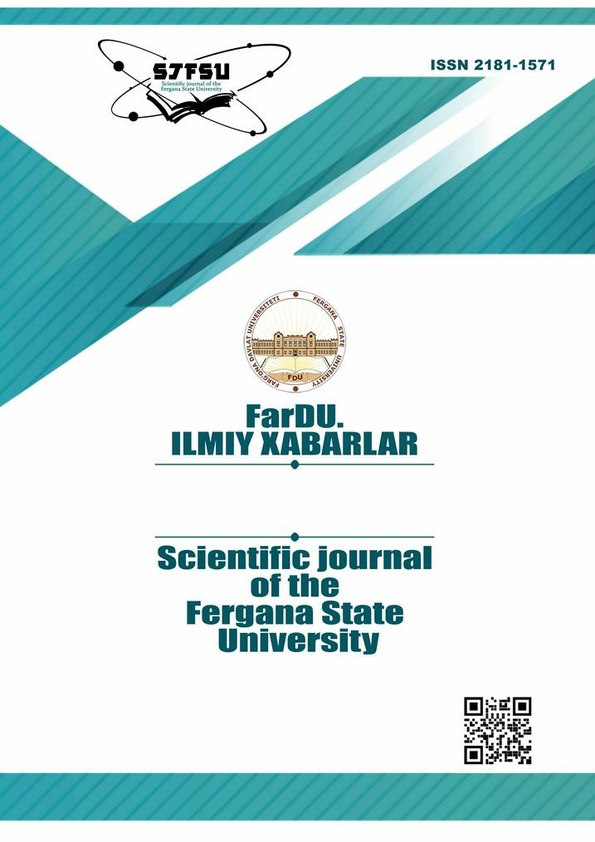THE CHANGE OF THE CONTENT AND FORM OF THE GHAZAL IN TAJIK LITERATURE
Keywords:
Ghazal, poetry, ghazal form, innovation, development of ghazal genre, ghazal poets, traditionalism, ghazal weight, rhyme, Persian-Tajik literature.Abstract
The poetic form of the ghazal is one of the most popular lyrical forms of Tajik literature, which has always been in the forefront. Tajik literature does not remember a poet who completely abandoned ghazal poetry. That is, the ghazal remained the most popular form of poetry at all times. However, its content underwent partial changes depending on the times.This poetic form, which was originally aimed at singing romantic moments, expressing mystical feelings and expressing philosophical opinions, began to embody political, social and historical moments in one or two verses. Gradually, ghazals were created, the number of verses with political and social themes increased. And starting from the end of the 19th century and the beginning of the 20th century, the theme of the ghazal has completely changed.At the time of independence, the gazelle traveled a new path of development. Poets such as Abdullah Subhan, Paymon, Jafari Muhammad and others had considerable researches in this context, whose recognition and evaluation will help to determine the place of this genre in the Tajik-language literature of Uzbekistan.
References
Абдулғанӣ Мирзоев. Рӯдакӣ ва инкишофи ғазал дар асрҳои X – XV. Дар китоби “Сездаҳ Мақола”. – Душанбе: Ирфон, 1977, саҳ. 5 – 52. (Abdulghani Mirzoev. Rudaki and the development of the ghazal in the 10th - 15th centuries. In the book "Thirteen Articles". - Dushanbe: Irfan, 1977, p. 5-52)
Сафарзода, Ҳабиб. Форсисароёни Ӯзбекистон. Теҳрон: Ал-Ҳудо, 1388 ҳ.ш. 232 саҳ.(Safarzoda, Habib. Persian singers of Uzbekistan. Tehran: Al-Huda, 1388 AH. 232 p)
А.Қамарзода ва дигарон. Адабиёт. Китоби дарсӣ барои хонандагони синфи 11–уми мактабҳои таълими умумӣ. – Т.: Ӯзбекистон, 2005, саҳ. 231.(A. Kamarzoda and others. Literature. Textbook for students of the 11th grade of general education schools. - T.: Uzbekistan, 2005, p. 231.)
Ҷаъфар Муҳаммад. Таҷаллӣ. – Т.: Доиратулмаорифи миллии Ӯзбекистон, 2008, саҳ. 33.(Jafar Muhammad. Tajalli. - T.: National Education Department of Uzbekistan, 2008, p. 33.) 5.Ҷонибек. Чароғи сухан. – Душанбе: Адиб, 2010 (Jonibek. Charog’I suxan. - Dushanbe: Adib, 2010)
Паймон. Шабоҳанг. – Т.: Шарқ, 2012, саҳ. 36(Pamon. Shabohang - T.: Sharq, 2012, p. 36)
Абӯабдуллоҳи Рӯдакӣ. Ашъор. Таҳияву тадвини матн бо муқаддима ва луғоту тавзеҳот аз Р.Ҳодизода ва Алии Муҳаммади Хуросонӣ. – Душанбе: Адиб, 2007, 416 саҳ. (Abu Abdullah Rudaki. Poems. Preparation and editing of the text with an introduction, glossary and explanations by R. Hadizoda and Ali Mohammad Khorasani. - Dushanbe: Adib, 2007, 416 pages.)
Қурбониён Р. Вазни шеъри Ҳофиз. – Ховар, № 3, 1-15 феврали соли 2013, саҳ. 10.(Qurboniyon R. The weight of Hafiz's poem. - Hovar, No. 3, February 1-15, 2013, p. 10).
Нормурод Каримзода. Авроқи дил. – Т.: Ӯзбекистон Ёзувчилар уюшмаси Адабиёт жамғармаси нашриёти, 2004.(Normurad Karimzoda. Avroqi dil. - T.: Uzbek Writers' Union Publishing House of Literature, 2004.)
Низомии Ганҷавӣ. Куллиёт: Иборат аз 5 ҷилд. Ҷилди V. – Душанбе: Ирфон, 1984, саҳ.(Ganjavi Nizomi. Summary: It consists of 5 volumes. Volume V. - Dushanbe: Irfan, 1984, p.)
Саъдиев С., Самадов А. Адабиёт. Китоби дарсӣ барои синфи 10-уми мактабҳои таҳсили ҳамагонӣ. – Т.: ХЭТН “O‘ZBEKISTON”, 2005, саҳ. 171 – 183(Saadiev S., Samadov A. Literature. Textbook for the 10th grade of general education schools. - T.: HETN "O'ZBEKISTON", 2005, p. 171-183)
АбдуллоТоҳириён, МеҳмонНарзиқулов. Ғазал ишқи ва ишқ ғазали (ЖаъфарМуҳаммад ғазалларига чизгилар). Тошкент: 2015,саҳ.112 (Abdullah Tahiriyan, Mehmon Narzikulov. Ghazal love and love ghazal (compositions to Jaafar Muhammad's ghazals). Tashkent: 2015, p. 112
Ҷ.Мирзоев. Решаҳо ва баргҳо (шеъри форсӣ-тоҷикӣ аз Ҷаъфари Рӯдакӣ то Ҷаъфари Термизӣ) Тошкент: “Янги нашр”, 2016 (J. Mirzoev. Reshaho va bargho (Persian-Tajik poetry from Jafar Rudaki to Jafar Termizi) Tashkent: "Yangi nashr", 2016)
Мусулмонқулов Р. Назарияи ҷинсҳо ва жанрҳои адабӣ. – Душанбе: Маориф, 1987 (Musulmonkulov R. Theory of genres and literary genres. - Dushanbe: Education, 1987)
Мусулмониён Р. Фурўғи шеъри ҷонпарвар. – Душанбе: 1984.( Musulmoniyon R. A poem of soulful poetry. - Dushanbe: 1984.)
С.Давронов. Омўзиши вазни шеъри тоҷикӣ, саҳ. 125.( S. Davronov. Studying the weight of Tajik poetry, p. 125.)
Downloads
Published
Issue
Section
License
Copyright (c) 2023 Scientific journal of the Fergana State University

This work is licensed under a Creative Commons Attribution-NonCommercial-NoDerivatives 4.0 International License.

